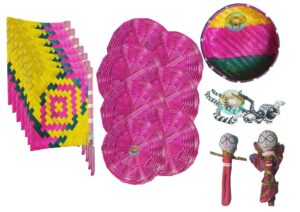Maithili is an Indo-Aryan language that is spoken by the people of North- Eastern Bihar and Nepal. The language has been named Maithili because it is spoken in the ancient land of Mithila.
It is also called Tirhutia because Tirhut is another name of the same region, which is derived from Tirabhukti, which means the bank of the river purified thrice by the sacrifices.
An Italian scholar named Amaduzzi in his book Alphabetum Brahmmanicum (1771A.D.) has mentioned this language as Maitili. At present, the language has about 30 million speakers in the 26 districts of N.E. Bihar. Moreover, it is the second state language of Nepal. The language is spoken by 12% of the total population there.
P.E.N (an international organization of letters for Poets, Essayists, Novelists) and the Sahitya Akademi, India have recognized Maithili. It is the sixteenth most spoken language in India and the fortieth most spoken languages of the world. It has its own script called the Mithilakshar or Tirhuta, originated from Brahmi, a script of 3 BC also found in Asokan Inscriptions.
Present-day Maithili writers and the public at large have adopted Devanagari script because of its widespread use, popularity, and convenience. Scholars believe that Siddhacharyas formed Protomaithili during 8-9th c. A.D., when they composed Charyapada (vide Prof. R.K.Chaudhary’sThe Survey of Maithili Literature ) since then the language, has progressed and several works have been found. The forms of Protomaithili words are also obtained sporadically in Prakrit Paingalam and other Sanskrit works written by scholars of Mithila under the native influence.
In 14th c AD, Kavi Shekhar Jotirishwar used the language Avahatta, a form of Protomaithili in his Varnaratnakar, which depicts the oldest prose used for the first time in any of the languages of Northeastern India.
Vidyapati the most prolific writer has also used Avahatta, the form of Proto Maithili, in his dramas, the Kirtilata and Kirtipataka. He also composed melodious poems depicting the love of Radha-Krishna in his Padavali that is written in the Maithili of the medieval period. Vidyapati also influenced Nepali, Bengali, Assamese, Oriya, and Manipuri literature during the medieval period. His influence has also been seen unto the modern period in the Shyama Sangeet of Rabindranath Thakur, composed by pen name as Bhanu Singher Padavali.
Maithili also flourished in the court of Kings of Nepal, during the Malla period. Several dramas, anthologies of lyrical poems, songs, and inscriptions in Maithili are available in Nepal of this period In Assam, Ankiya Natak’s dialogue and songs used to be composed in Maithili in the period of Shankardev and Madhavdev.
During the last 150 years the foreign scholars like Colebrooke (1801), Hoernle (1880), Grierson (1881), Kellog (1893), and others have studied Maithili’s grammar, phonology, lexicography, historical surveys, and comparative linguistics. These scholars along with Indian linguists like Dr. Suniti Kumar Chatterji and Mahapundit Rahul Sankrityayan have declared Maithili as a full-fledged independent language that has originated from Sanskrit-Prakrit, Magadhi-Prakrit, Apabhramsa, to Avahatta, Protomaithili and then developed into the formation of modern Maithili.
Earlier attempts were made by Sir G.A Grierson to publish the grammar in 1881 AD, chrestomathy, and vocabulary of the language in 1882 AD and Bihar peasant life in 1885 AD to compile the form of Maithili words. He also collaborated with Hoernle to write a comparative dictionary of the Bihari languages in 1885 & 1889 AD. In 1946, Pundit Deenbandhu Jha wrote its grammar based on the sutras of the Sanskrit grammar of Panini. He also published a Maithili Dictionary in 1950. In 1973 the Institute of Advanced Studies Simla published an incomplete dictionary of the language compiled by Dr. Jayakant Mishra.
Shared by Sonu Mishra

